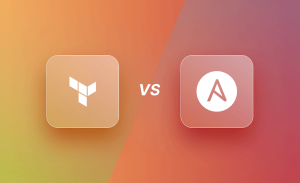
Introduction
In the world of relational databases, optimizing query performance is a paramount concern for developers and database administrators. One powerful tool to address this challenge is the implementation of MySQL materialized views. In this article, we will delve into what MySQL materialized views are and how they can significantly improve query response times. We will also walk through a practical example and the process of creating materialized views using scheduled events.
MySQL Materialized Views: A Brief Overview
MySQL materialized views are a way to store the results of a query as a physical table. Unlike traditional views that merely present a saved query’s result set, materialized views store the data, allowing for faster querying by precomputing and indexing the results. This can be particularly beneficial for large and complex queries where real-time calculations can lead to performance bottlenecks.
Example: Storing Row Counts
Consider a scenario where you need to retrieve the count of rows in a MyISAM table. Instead of recalculating the row count every time, MySQL materialized views allow you to store this count in a table header, ensuring immediate results. This optimization can significantly enhance the efficiency of such queries.
Storing InnoDB Row Counts
InnoDB row counts can also be stored using materialized views. By creating a dedicated table to store InnoDB row counts, you can maintain this information for various tables. Depending on your data’s volatility, you might refresh this table periodically, such as once a day, to ensure accuracy.
Using Scheduled Events
MySQL events provide a means of scheduling tasks within the database. These tasks can include data transfers between the source and materialized views. The scheduler can be set to execute tasks at specific intervals, such as daily or hourly. To enable MySQL events, use the event_scheduler variable or the event-scheduler flag during MySQL startup.
Creating MySQL Scheduled Events
To illustrate the creation of a MySQL scheduled event, let’s consider a scenario where we want to create a materialized view of user statistics. The event can be set to run every day after business hours to avoid disrupting server performance. Using dynamic SQL query creation techniques, such as GROUP_CONCAT, you can efficiently generate SQL queries for multiple databases.
Conclusion
In the realm of database management, optimizing query performance is an ongoing endeavor. MySQL materialized views offer a potent solution to enhance the speed and efficiency of queries, especially for data-intensive applications. By precomputing and storing query results, developers and administrators can drastically reduce query response times, leading to a better user experience and improved overall application performance.
Incorporating MySQL materialized views into your database architecture can greatly enhance query performance, ensuring that your applications deliver fast and reliable results even with extensive data processing requirements.
Uses of MySQL Materialized Views: Optimizing Query Performance
MySQL materialized views are a powerful tool in the arsenal of database administrators and developers. They serve various purposes that contribute to optimizing query performance and improving overall database efficiency. Here are some key uses of MySQL materialized views:
- Improved Query Performance: The primary purpose of materialized views is to enhance query performance. By storing the results of complex queries as physical tables, you can eliminate the need to recompute the results every time the query is executed. This leads to faster response times and better user experience.
- Aggregate Calculations: Materialized views are particularly useful for queries involving aggregation functions like SUM, COUNT, AVG, etc. These calculations can be precomputed and stored in materialized views, reducing the computational load during query execution.
- Frequently Accessed Reports: If your application requires generating reports frequently, materialized views can be used to store the data needed for these reports. This eliminates the need to generate the report from scratch each time, resulting in quicker report generation.
- Joining Large Tables: Joining large tables can be resource-intensive and slow down query execution. Materialized views can store the results of complex joins, allowing you to retrieve data without repeatedly performing the join operation.
- Data Warehousing: In data warehousing scenarios, where data is extracted, transformed, and loaded (ETL) for reporting and analysis, materialized views can store precomputed aggregated data. This accelerates query processing for analytical purposes.
- Cached Data: Materialized views act as a form of data caching. If certain queries are frequently executed, the results can be stored in materialized views, reducing the need to query the original tables repeatedly.
- Real-Time Dashboards: For applications with real-time dashboards or visualizations, materialized views can store the underlying data required for these dashboards. This ensures that the dashboard displays the latest data without significant query delays.
- Historical Data: Materialized views can store historical snapshots of data at specific time intervals. This is useful for tracking changes over time and performing trend analysis.
- E-Commerce Catalogs: In e-commerce applications, where product catalogs can be extensive, materialized views can store precomputed product data to accelerate product searches and listings.
- Performance Optimization: Materialized views allow you to offload complex query processing from the production database, which can lead to better overall database performance and resource utilization.
- High-Traffic Applications: For applications with high user traffic and concurrent queries, materialized views can help distribute the query load and prevent performance bottlenecks.
- Data-Intensive Applications: Applications dealing with large volumes of data, such as IoT platforms or social media applications, can benefit from materialized views to optimize data retrieval and analysis.
In essence, MySQL materialized views are a strategic tool to enhance query response times and improve the overall performance of data-intensive applications. By precomputing and storing query results, they alleviate the computational burden on the database during query execution, resulting in faster and more efficient data retrieval.





